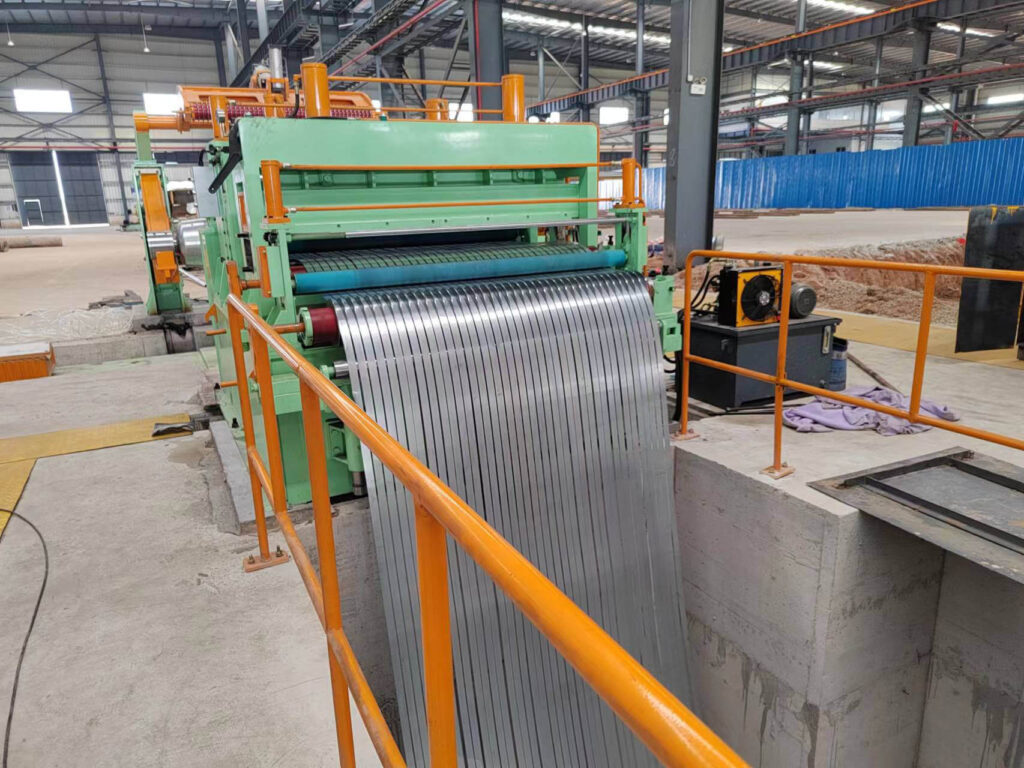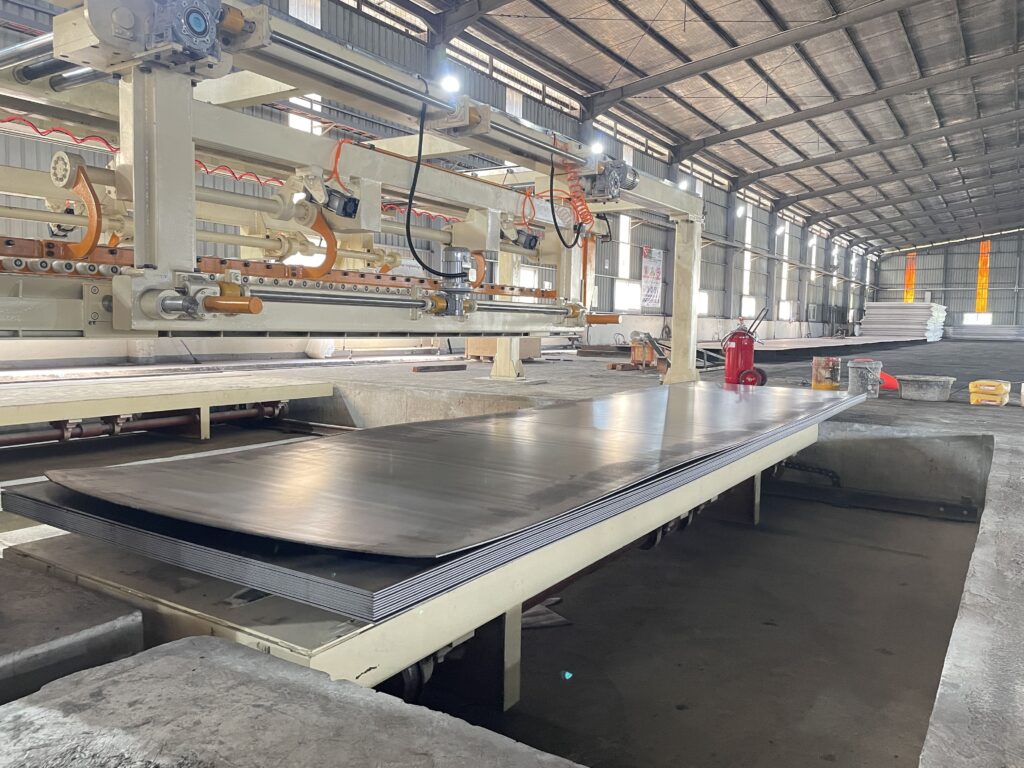Choosing Between Slitting vs CTL for Aluminum, Stainless & Mild Steel
Compare slitting lines vs cut-to-length systems for aluminum, stainless steel & mild steel processing. MD series specs, ROI analysis & technical selection guide.
Selecting between slitting lines and cut-to-length (CTL) systems is a critical decision that directly influences manufacturing efficiency, product quality, and material utilization across aluminum, stainless steel, and mild steel processing. Slitting lines precisely convert wide coils into multiple narrow strips—ranging typically from 6 to 600 millimeters in width—while preserving coil form, optimizing material yield, and minimizing surface damage and work hardening, particularly with thin-gauge aluminum. In contrast, CTL systems deliver flat, accurately cut sheets with strict length control, essential for applications demanding high dimensional precision and edge quality, such as automotive body panels and stainless steel fabrication.
The choice hinges on nuanced factors including material thickness, final product geometry, production throughput, and tolerance requirements. Industry-leading case studies demonstrate that adopting advanced MD series slitting machines with ±0.1mm accuracy and up to 250 m/min speed, or high-efficiency CTL systems featuring automated leveling and on-the-fly adjustments, can significantly reduce waste and enhance operational ROI. By integrating cutting-edge automation and material-specific process optimizations, manufacturers secure competitive advantage and product excellence in an evolving metal processing landscape.
Understanding the Core Processing Methods
How Slitting Lines Operate
Slitting lines use circular knives arranged on rotating arbors to make longitudinal cuts through unwinding metal coils. The process maintains material in coil form, making it ideal for applications requiring continuous strip feeding such as tube manufacturing, roll forming, and stamping operations where coil-to-coil material handling provides efficiency advantages.

The cutting mechanism relies on properly adjusted knife overlap – typically 5-8% of material thickness – to achieve clean edges without excessive burr formation. Material tension control throughout the process prevents stretching or distortion that could affect dimensional accuracy in downstream operations.
Cut-to-Length Line Fundamentals
CTL systems uncoil material, level it through straightening rolls, and cut it into predetermined lengths using shearing mechanisms. This process produces flat sheets suitable for applications requiring specific piece lengths, such as architectural panels, appliance components, and fabricated parts where flat stock feeding is necessary.
The leveling process removes coil set (curvature) and internal stresses, resulting in flatter material than typically achievable with slit coils. However, this requires additional processing steps and equipment compared to slitting operations.
Material-Specific Processing Considerations
Aluminum Alloy Processing Challenges
Aluminum’s tendency toward work hardening makes processing method selection critical. The continuous cutting action in slitting minimizes work hardening compared to the impact cutting in CTL systems. For thin aluminum gauges (0.3-2.0mm), slitting maintains better edge quality and reduces the risk of edge cracking.
Common aluminum grades like 1100, 3003, and 5052 respond differently to processing forces. Softer grades benefit more from slitting’s gentle cutting action, while harder alloys may require specialized tooling regardless of the chosen process. Surface protection becomes paramount – many aluminum applications require protective film application during processing to prevent scratching.
Stainless Steel Processing Requirements
Stainless steel presents unique challenges due to work hardening characteristics and heat generation during cutting. The austenitic grades (304, 316) work harden rapidly under mechanical stress, making processing parameter optimization crucial for both methods.

Slitting’s continuous cutting action typically generates less heat than shearing, potentially extending tool life and maintaining better edge metallurgy. However, CTL systems can accommodate thicker stainless steel sections more effectively, particularly for grades above 6mm thickness where slitting becomes mechanically challenging.
The ferritic grades (430 series) and duplex stainless steels each present distinct processing characteristics that influence equipment selection. Magnetic properties in ferritic grades can affect material handling, while duplex grades require careful temperature control to prevent phase changes during processing.
Mild Steel Processing Economics
For mild steel applications, processing method selection often comes down to production economics and end-use requirements. High-volume operations processing standard commercial grades typically favor slitting for narrow strip production due to faster setup times and higher material utilization rates.
The automotive industry extensively uses slit steel strips for structural components and trim applications, where the coil format integrates well with stamping press operations. Construction applications, conversely, often require flat sheets for fabrication, making CTL systems more suitable despite higher processing costs per ton.
Technical Specifications and Performance Parameters
Dimensional Accuracy Capabilities
Modern slitting lines typically achieve width tolerances of ±0.1mm to ±0.3mm, depending on material thickness and properties. This precision level meets requirements for most industrial applications, including automotive stamping and tube manufacturing.
CTL systems excel in length accuracy, commonly achieving ±0.5mm to ±1.0mm depending on material thickness and line speed. The leveling process inherent in CTL operation also provides superior flatness compared to slit coils, which retain some coil set characteristics.
Processing Speed and Throughput
Line speeds vary significantly based on material properties and quality requirements. Thin gauge mild steel can be processed at speeds up to 200 meters per minute on modern slitting lines, while thicker materials or premium grades may require reduced speeds for quality maintenance.
CTL processing speeds are generally lower due to the intermittent cutting action and material handling requirements. However, the gap narrows for thicker materials where slitting speeds must be reduced for mechanical and quality considerations.
Material Thickness Ranges
Slitting lines typically handle materials from 0.1mm to 8mm thickness most effectively, with some heavy-duty systems capable of processing up to 12mm. Beyond these limits, cutting forces become excessive and edge quality deteriorates.
CTL systems can process thicker materials more effectively, with industrial systems handling up to 25mm thickness in some configurations. This capability makes CTL systems preferred for structural applications requiring thick plate processing.
Equipment Selection Framework
Production Volume Analysis
High-volume operations (>500 tons/month) processing narrow strips benefit most from slitting line investment. The faster setup times and continuous operation characteristics provide economic advantages that offset higher initial equipment costs.
Medium-volume operations (100-500 tons/month) with mixed requirements might benefit from combination systems or flexible equipment configurations that can handle both slitting and CTL operations. These hybrid approaches require higher initial investment but provide operational flexibility.
Lower-volume operations (<100 tons/month) often find CTL systems more economical due to lower initial investment and greater product flexibility, particularly when serving diverse customer bases requiring various sheet sizes.
Quality Requirements Assessment
Applications requiring tight width tolerances favor slitting lines, while length-critical applications benefit from CTL systems. Surface finish requirements also influence selection – slitting generally provides better edge quality for thin materials, while CTL systems offer superior flatness.
Automotive applications typically specify both tight dimensional tolerances and superior surface finish, often requiring premium processing capabilities regardless of the chosen method. Medical and food service applications may require additional surface treatments or certifications that influence equipment selection.
Operational Considerations and Best Practices
Setup and Changeover Efficiency
Slitting line changeovers typically require 30-90 minutes depending on the complexity of width changes and tool adjustments. Automated systems can reduce this significantly, but manual systems still require skilled operators for optimal efficiency.
CTL changeovers for length adjustments can be accomplished in minutes through programmable controls, but width changes require physical adjustments similar to slitting systems. The frequency of changeovers often determines which advantage is more valuable operationally.
Maintenance Requirements
Slitting systems require regular knife maintenance and replacement, with tool life depending heavily on processed materials and operating parameters. Stainless steel processing can reduce tool life by 50-70% compared to mild steel.
CTL systems require maintenance on shearing mechanisms, straightening rolls, and material handling equipment. While individual maintenance tasks may be less frequent, the overall system complexity can result in higher maintenance costs per processed ton.
Safety and Compliance
Both processing methods require comprehensive safety systems including emergency stops, light curtains, and lockout/tagout procedures. The rotating equipment in slitting lines presents specific hazards requiring additional safeguarding.
Material handling safety becomes critical in both systems, particularly for heavy coils and finished products. Proper training and documented procedures are essential regardless of the chosen processing method.
Making the Strategic Decision
When Slitting Lines Make Sense
Choose slitting when your primary requirements include:
- Narrow strip production (under 300mm width)
- High-volume processing of similar materials
- Coil-fed downstream operations
- Cost-sensitive applications where material utilization is critical
- Thin gauge materials requiring gentle processing
The tube and pipe manufacturing industry exemplifies ideal slitting applications, where continuous strip feeding provides significant operational advantages over flat stock handling.
When CTL Systems Are Optimal
CTL systems excel when requirements include:
- Flat sheet production for fabrication operations
- Variable length requirements with tight tolerances
- Thick material processing (over 6mm)
- Applications requiring superior flatness
- Mixed production with frequent specification changes
Construction and appliance manufacturing typically benefit from CTL processing due to fabrication requirements and the need for flat stock material handling.
Hybrid and Combination Approaches
Some operations benefit from combination systems that can perform both slitting and CTL functions. These systems require higher initial investment but provide maximum flexibility for diverse production requirements.
The decision often comes down to production volume, product mix, and operational flexibility requirements. Higher volume operations typically justify dedicated equipment, while lower volume operations benefit from flexibility.
Industry Trends and Future Considerations
Automation and Industry 4.0 Integration
Modern metal processing operations increasingly integrate automated material handling, quality monitoring, and predictive maintenance capabilities. Both slitting and CTL systems benefit from these advances, though implementation approaches differ.
Data collection and analysis capabilities enable optimization of processing parameters, tool life prediction, and quality trend analysis. These capabilities provide competitive advantages regardless of the chosen processing method.
Market Growth and Technology Development
The global coil processing equipment market continues expanding, driven by automotive lightweighting, construction industry growth, and increasing quality requirements. Market analysis indicates steady growth in both slitting and CTL equipment segments.
Technology development focuses on increased automation, improved precision, and energy efficiency. These trends benefit both processing methods, though specific implementations vary based on application requirements.
Conclusion and Next Steps
Making an informed choice between slitting and cut-to-length (CTL) processing demands a comprehensive evaluation of your production goals, material properties, and operational dynamics. Neither method is inherently superior; rather, their strengths align with distinct applications and manufacturing workflows. For example, slitting lines excel in delivering narrow, high-volume coil strips with exceptional dimensional accuracy—often achieving strip widths from 6mm up to 600mm with tolerances as tight as ±0.1mm—thereby maximizing material utilization and minimizing scrap, as demonstrated in recent automotive supply chain optimizations employing MD-850 series slitters. Conversely, CTL systems provide unparalleled control over sheet length and flatness, making them indispensable for thick gauge stainless steel sheet fabrication used in aerospace and heavy machinery sectors, where precise length specifications and surface finish quality are paramount.
The decision framework should weigh key factors such as end-product dimensional priorities, material thickness and surface requirements, production scale, and downstream handling preferences. Additionally, a holistic total cost of ownership analysis — encompassing equipment investment, operational costs, scrap reduction, and throughput capabilities — is crucial to maximize long-term ROI. Engaging with seasoned equipment specialists who understand process nuances and industry-specific demands can ensure optimal equipment configuration and integration, driving both productivity and product excellence in today’s competitive metal processing landscape.neers provides the most reliable foundation for equipment selection decisions.




